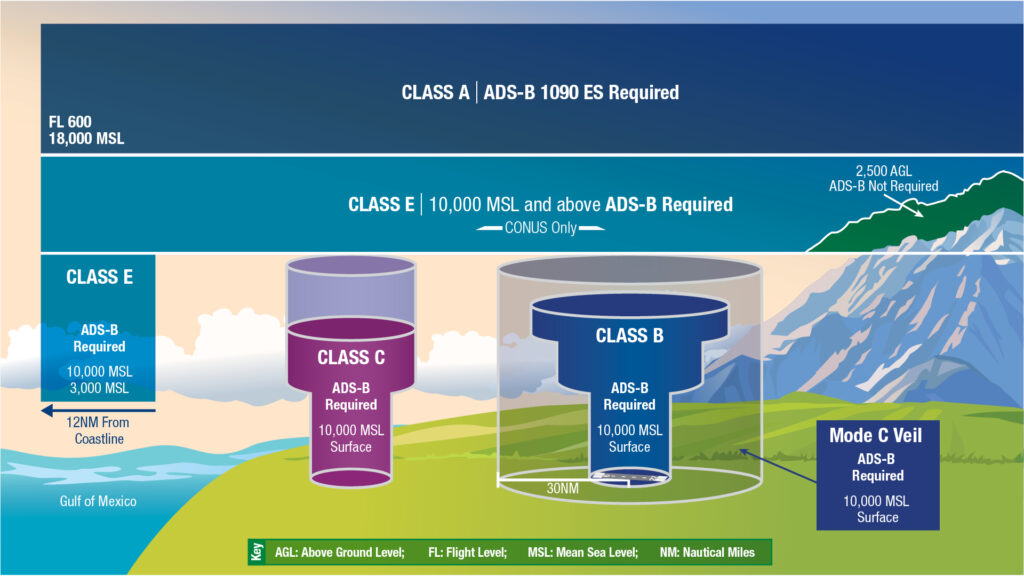Airspace classification is an essential aspect of aviation, designating specific areas of airspace with defined rules and regulations. These classifications ensure the safe and efficient movement of aircraft while minimizing the risk of collisions.
1. Class A Airspace
Class A airspace is the highest level of controlled airspace and is typically found above flight level 600 (FL600), approximately 60,000 feet. Air traffic control (ATC) provides separation services for all aircraft operating within Class A airspace. Pilots must have specific IFR clearances and follow instrument flight procedures.
2. Class B Airspace
Aircraft operating within Class B airspace must adhere to specific ATC instructions and maintain communication with the controlling facility.
3. Class C Airspace
Class C airspace requires two-way communication with ATC and a Mode C transponder for all aircraft operating within its boundaries. Both IFR and VFR aircraft can operate within Class C airspace, with ATC providing separation services to IFR traffic.
4. Class D Airspace
Class D airspace is designated around airports with a lower level of air traffic activity compared to Class C airspace. Both IFR and VFR aircraft can operate within Class D airspace, with ATC providing limited separation services to IFR traffic.
5. Class E Airspace
Class E airspace encompasses various areas that do not fall under other controlled airspace classifications. It extends from specific altitudes, such as the surface, the base of overlying controlled airspace, or a designated altitude. Pilots must adhere to appropriate communication and navigation requirements when operating within Class E airspace.
6. Class F Airspace
Its designations and regulations vary between countries, and pilots must familiarize themselves with the specific requirements for each area.
7. Class G Airspace
It extends from the surface to the base of controlled airspace above, which can vary depending on the surrounding airspace classification. Pilots operating within Class G airspace must follow visual flight rules and maintain vigilance for other aircraft operating in the vicinity.
Understanding the different airspace classifications and their designations is crucial for pilots to navigate the airspace safely and adhere to applicable regulations. By following the specific requirements and procedures associated with each classification, aviation authorities can ensure the orderly and efficient flow of air traffic while prioritizing safety.More
You may also like
-
Automatic Fruit Wine Bottling Line for Small Wineries: A Complete Guide
-
How Does Plywood HSN Code Decide the GST Rate for Traders and Manufacturers?
-
POS Terminal Type: Which Is Best for Your Business?
-
How to Choose Fixed and Portable Gas Monitors for Industrial Gas Detection?
-
Simplifying Trademark Registration in Hong Kong: What Businesses Need to Know

